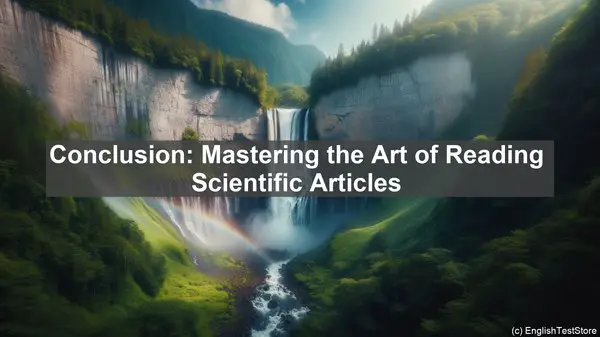Introduction: The Importance of Reading Scientific Articles for IELTS
Welcome to today’s lesson. When it comes to the IELTS exam, reading scientific articles is a common task. Not only does it test your comprehension skills, but it also assesses your ability to analyze and synthesize information. In this video, we’ll explore the top 10 techniques that will make this process easier and more efficient for you. So, let’s dive in!
1. Skim the Article First
Before delving into the details, it’s crucial to get an overview of the article. Skimming involves quickly reading the title, abstract, headings, and subheadings. This gives you a sense of the main ideas and the structure of the article. It’s like creating a mental map before embarking on a journey.
2. Pay Attention to Graphs, Tables, and Figures
Scientific articles often include visual representations of data. These graphs, tables, and figures can provide a wealth of information in a concise manner. Take the time to analyze them, as they can help you grasp complex concepts more easily.
3. Highlight Key Points
As you read, it’s essential to identify the main ideas and key details. Highlighting or underlining them not only helps with comprehension but also makes it easier to review the article later. You can use different colors to indicate different levels of importance.
4. Look Up Unfamiliar Terms
Scientific articles often contain specialized vocabulary. If you come across a term you’re not familiar with, don’t skip over it. Take the time to look it up. Understanding these terms is crucial for comprehending the article as a whole.

5. Read Actively
Reading a scientific article requires active engagement. This means asking questions as you read, making connections to prior knowledge, and summarizing what you’ve read in your own words. Passive reading, where you simply scan the words without truly understanding them, won’t suffice.
6. Take Notes
While reading, it’s a good idea to take notes. This can be in the form of a summary, key points, or even questions that arise. Not only does this help with comprehension, but it also serves as a valuable resource when revisiting the article later.
7. Break Down Complex Sentences
Scientific articles are notorious for their long, complex sentences. If you come across a sentence that seems overwhelming, break it down into smaller parts. Identify the subject, verb, and object. This can make the sentence more manageable and easier to understand.
8. Pay Attention to Signal Words
Signal words, such as ‘however,’ ‘therefore,’ or ‘in contrast,’ provide important clues about the relationship between ideas. They help you understand the author’s argument and the overall flow of the article. Paying attention to these words can enhance your comprehension.

9. Summarize Each Section
After reading a section, take a moment to summarize it in your own words. This not only reinforces your understanding but also helps you keep track of the main ideas. If you can’t summarize a section, it’s an indication that you need to go back and reread.
10. Review and Reflect
Once you’ve finished reading the article, it’s important to review and reflect on what you’ve learned. Ask yourself questions about the main ideas, the author’s argument, and the implications of the research. This not only solidifies your understanding but also prepares you for any discussions or writing tasks related to the article.
